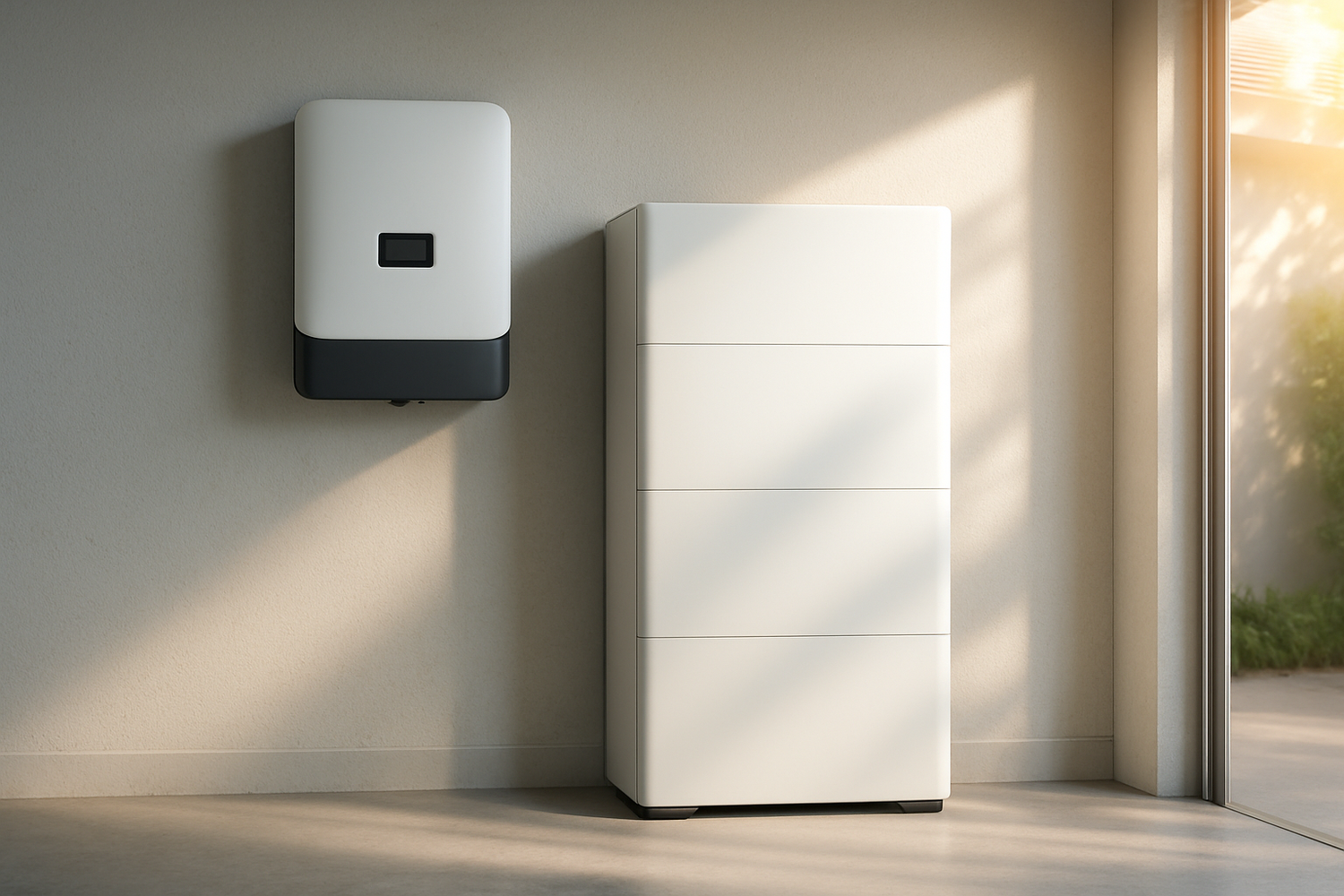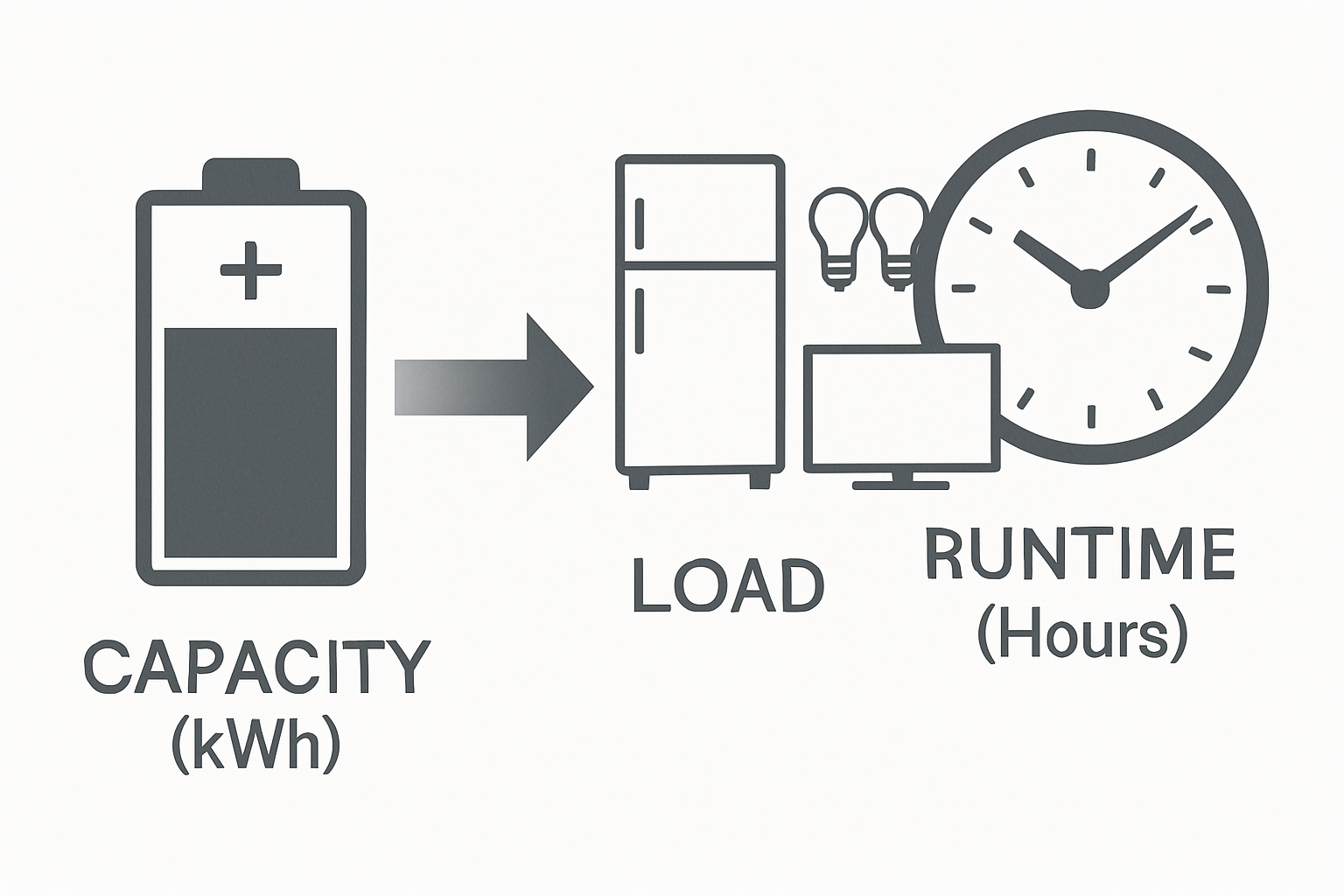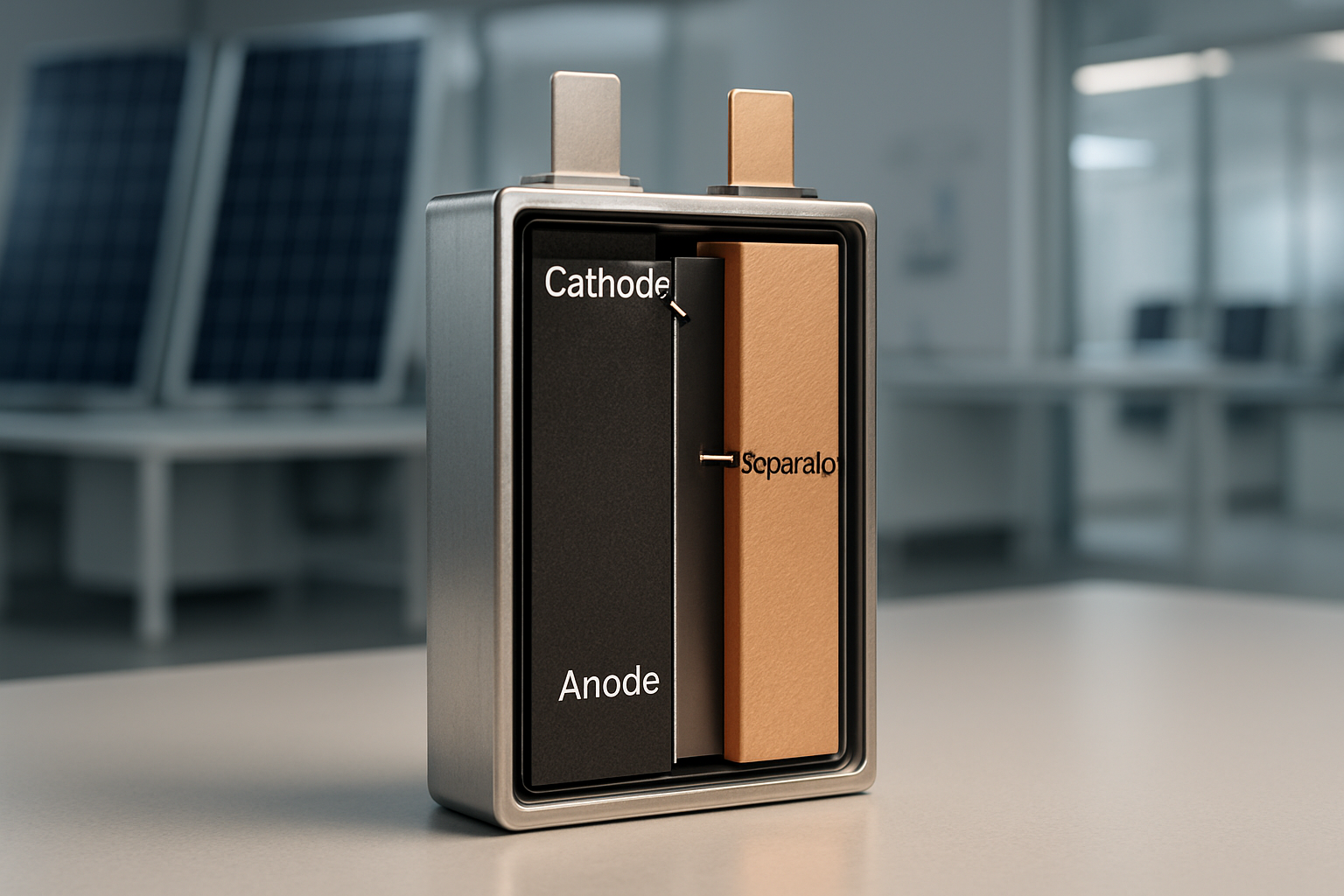When choosing a solar battery, it's tempting to adopt a 'bigger is better' mindset. The idea of having a massive energy reserve is appealing. But is a larger capacity always the most practical or cost-effective solution for your energy storage needs? The answer is more nuanced than a simple yes or no. Correctly sizing your solar battery is a critical balancing act between cost, performance, and longevity. An oversized battery can be as problematic as an undersized one.
Understanding the Fundamentals: Battery Capacity vs. Runtime
To make an informed decision, it’s important to grasp two core concepts: battery capacity and runtime. While related, they are not the same thing, and confusing them can lead to costly mistakes in your solar battery sizing journey.
What is Battery Capacity (kWh)?
Battery capacity is the total amount of energy a battery can store, measured in kilowatt-hours (kWh). Think of it as the size of a fuel tank in a car. A 10 kWh battery can hold 10 kilowatts of energy for one hour. This figure represents the total potential energy you have at your disposal when the battery is fully charged. Residential battery options commonly range from 5 kWh to over 20 kWh.
How Runtime Differs from Capacity
Runtime, on the other hand, is the duration your battery can power your appliances. To use the car analogy again, runtime is how far you can drive on a full tank of fuel. It’s not a fixed number; it depends entirely on your energy consumption, or 'load'. A 10 kWh battery could power a 1 kW appliance for 10 hours, but it would only power a 2 kW appliance for 5 hours. Understanding your specific load is the key to converting capacity into a meaningful runtime estimate.
The Critical Factors Influencing Your Sizing Decision
Proper solar battery sizing requires a careful assessment of your unique energy habits and goals. It’s not a one-size-fits-all calculation. According to the U.S. Department of Energy's Solar Futures Study, as solar energy expands, integrating well-sized energy storage is vital for grid stability and community resilience.
Calculating Your Daily Energy Consumption
The first step is to perform an energy audit. Review your past electricity bills to find your average daily energy usage in kWh. For a more detailed view, list your essential appliances, their wattage, and the number of hours you use them daily. This will give you a clear picture of your total daily energy needs in watt-hours (Wh).
| Appliance | Power (Watts) | Hours of Use/Day | Daily Energy (Wh) |
|---|---|---|---|
| Refrigerator | 200 W | 8 hours (cycling) | 1600 Wh |
| LED Lights (x10) | 100 W (total) | 6 hours | 600 Wh |
| Television | 150 W | 4 hours | 600 Wh |
| Laptop Charger | 65 W | 5 hours | 325 Wh |
| Total Estimated Load | 3125 Wh or 3.125 kWh |
Depth of Discharge (DoD) and Its Impact
Depth of Discharge (DoD) is the percentage of a battery's capacity that has been used. For instance, if you use 9 kWh from a 10 kWh battery, the DoD is 90%. Different battery chemistries have different recommended DoD levels to preserve their lifespan. LiFePO4 (Lithium Iron Phosphate) batteries are a superior choice, often allowing for a DoD of 90-100% without significant degradation. This means you can use more of the battery's stored energy, which is a crucial factor in sizing calculations. Deeper discharges put more stress on a battery, so a higher quality battery with a high DoD tolerance is more robust.
Days of Autonomy: Preparing for the Unexpected
Days of autonomy refers to the number of consecutive days your battery system can power your home without any solar charging, such as during long periods of cloudy weather. For grid-tied systems, 1-2 days of autonomy might be sufficient for outage protection. For off-grid living, 3 or more days is often recommended. More autonomy requires a larger battery capacity, so you must balance preparedness with your budget.
The Downsides of Oversizing Your Solar Battery
While having insufficient capacity is an obvious problem, oversizing your battery bank comes with its own set of significant drawbacks that can undermine the benefits of your solar investment.
The Financial Implications: Higher Upfront Costs
The most immediate disadvantage of an oversized battery is the higher initial cost. Energy storage systems are a significant investment, and paying for capacity that you consistently fail to use is an inefficient use of funds. This extends the payback period of your solar panel system and diminishes your overall return on investment.
Inefficiency and Underutilization
An oversized battery that is rarely discharged to a significant degree can lead to inefficiencies. While LiFePO4 batteries are resilient, consistent shallow cycling may prevent the Battery Management System (BMS) from performing its cell balancing functions optimally. Furthermore, you lose some energy during the charge-discharge cycle due to round-trip efficiency losses. Storing energy you never use means you've incurred those losses without gaining any benefit.
Physical Space and Installation Complexity
Higher capacity batteries are physically larger and heavier. This can be a practical constraint, limiting your installation options, especially in smaller homes or properties with limited space. The increased weight and size can also add complexity and cost to the installation process.
Finding the Sweet Spot: How to Right-Size Your System
The goal is to find a balance that meets your energy needs reliably without excessive cost. As noted by the International Renewable Energy Agency (IRENA) in its Electricity Storage Valuation Framework, properly valued and sized storage is key to creating a flexible and efficient energy system.
A Practical Sizing Formula
A straightforward formula can give you a solid starting point for determining your required battery capacity:
(Average Daily Energy Consumption kWh / Depth of Discharge) x Days of Autonomy = Required Battery Capacity (kWh)
For example, with a daily usage of 10 kWh, a LiFePO4 battery with a 95% DoD, and a desire for 2 days of autonomy:
(10 kWh / 0.95) x 2 = 21.05 kWh
This calculation suggests a battery with a capacity of around 21 kWh would be appropriate.
Matching Battery to Your Solar Array
Your battery is only as good as the solar panel system charging it. An oversized battery paired with an undersized solar array will struggle to reach a full charge, especially during winter months with shorter daylight hours. The solar inverter plays a crucial role here, managing the flow of energy between the panels, battery, and your home. For a comprehensive look at how these components work together, the ultimate reference on solar storage performance offers valuable technical details.
Future-Proofing Your Energy Needs
Consider your future energy plans. Are you thinking of buying an electric vehicle or adding a major electrical appliance? It's wise to factor in a buffer for increased consumption. However, instead of buying a massive battery from the start, a better approach is to choose a modular, scalable energy storage system. This allows you to add more battery capacity later, providing flexibility as your needs evolve. The International Energy Agency (IEA) highlights that scalable storage technologies are advantageous because they reduce initial capital requirements and provide flexibility for future uncertainty.
Your Path to Energy Independence
Choosing the right solar battery capacity is not about getting the biggest unit available; it's about getting the smartest one for your situation. A properly sized energy storage system ensures you have reliable power, maximizes your investment, and provides a seamless path toward energy independence. By carefully analyzing your consumption, understanding key technical factors like DoD, and planning for the future, you can design a system that is both efficient and cost-effective, perfectly tailored to your needs.
Frequently Asked Questions
How many solar batteries do I need for my home?
The number of batteries depends on your daily energy use and desired backup time. While a typical home might use one or two 10-15 kWh batteries, the best approach is to conduct a personalized energy audit to determine your specific needs.
Can I add more batteries to my solar system later?
Yes, if you choose a scalable energy storage system. Many modern systems are designed to be modular, allowing you to expand your storage capacity as your energy needs grow or your budget allows. Planning for scalability from the start is a wise strategy.
What is the difference between kW and kWh for a solar battery?
Kilowatt (kW) is a unit of power, indicating how much electricity a battery can deliver at one time. Kilowatt-hour (kWh) is a unit of energy, representing the total amount of electricity the battery can store. Think of kW as the speed of the water flow from a tap, and kWh as the total size of the water tank.
Do LiFePO4 batteries require different sizing considerations?
LiFePO4 batteries are an excellent choice for energy storage due to their long lifespan, safety, and high Depth of Discharge (DoD), often up to 100%. This high DoD means you can utilize nearly all of the battery's rated capacity, which can influence sizing calculations. You may be able to use a LiFePO4 battery with a slightly lower rated capacity compared to other chemistries to achieve the same usable energy.





Leave a comment
All comments are moderated before being published.
This site is protected by hCaptcha and the hCaptcha Privacy Policy and Terms of Service apply.